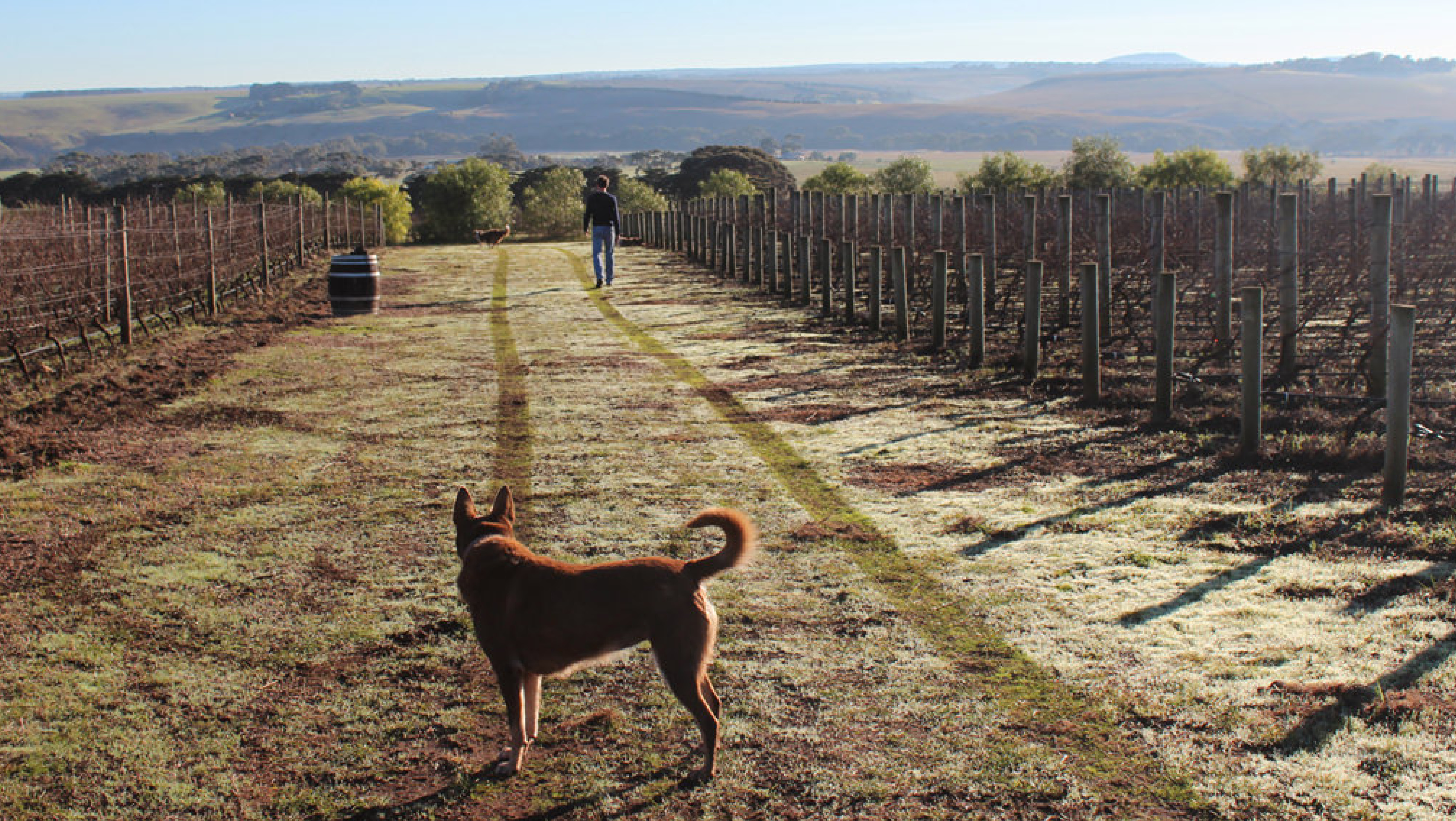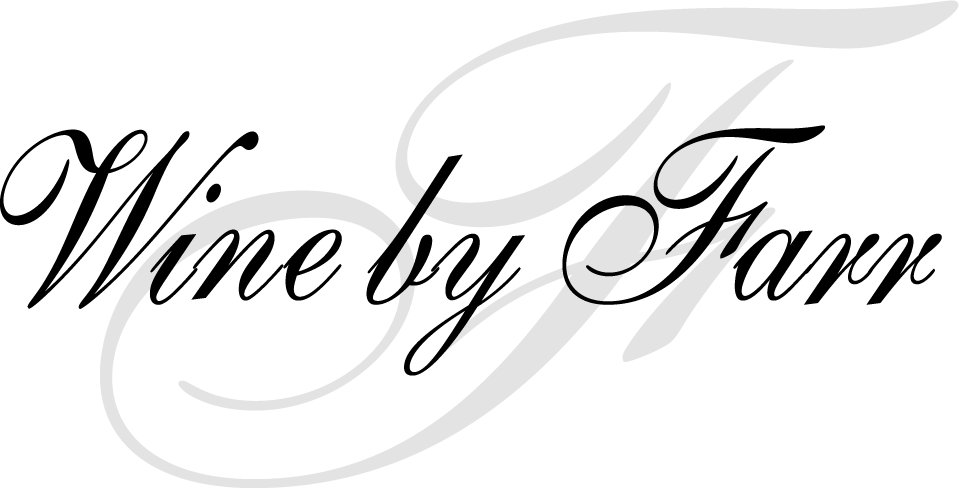Vintage 2021 – A year full of Passion, Persistence and Patience
An amazingly challenging yet rewarding vintage has been produced from the 2021 vintage. Rainfall and humidity certainly challenged us throughout the growing season but persistent humidity was met with a persistent, passionate and determined approach to really create some special wines from conditions not regularly seen in Bannockburn. The team did an amazing job to keep the vineyards canopies open and clean of disease. The moist and mild conditions from November through to early February finished with some great finishing temperatures and sunlight to sustain the great natural acidity and flavour that had built over the final month before picking started on the 9th of March.
Very quickly during fermentation a great finesse and length was apparent in the wines. In barrel the freshness of acidity, fine tannins and best of all savoury and elegant fruit flavours certainly suggested that we have a strong vintage to show, come release.
Vintage 2020
A year that we never thought would end.
Winter rains kick started the season, making it possible to achieve ample soil moisture leading into Spring. However, we were then dealt with a different hand to what we were expecting. The constantly evolving environment, be it natural, social or economic, set the scene for the great unknown of 2020.
There is too much for us to reminisce about in a year that saw a world in pain. Somehow our operation (agriculture) was considered an “essential service”, and with that came a life on the farm that l loved. We also housed 5 international backpackers that l began to know a little too well....
Rather than bore you in negativity and heartache of the growing season, let's list it in point form, so that we can look at what was achieved during harvest.
Spring
Harsh, early season frosts, lost 15% of the Cote Vineyards.
Conditions quickly drying out.
Cold strong winds destroyed canopy, shoots all over the ground.
Strong winds preventing fruit set.
Hail across the original house site.
Summer
Hot and dry winds sweep across the Victorian landscape.
Unthinkable bushfires across Victoria, the vineyard was not at the forefront of our minds.
Christmas – wow did we need it.
Wind settling and rain on the horizon.
Relief for the vines.
Very cool end to summer.
Autumn
The vines look battered, yet dark green due to the mid-summer rain.
Covid 19 is upon us.
Who is going to help pick the fruit?
Very slow ripening, questioning if we will reach desired flavour and sugar.
Tentatively start picking March 15th, result - fruit not ready.
We resumed harvest on the 20th of March in the Sangreal vineyard, that showed even in the cooler years, there is always great sweet fruit expression in this vineyard. As we ventured into more sites for picking, we realised that it was certainly a year for less whole bunch to be used in the ferments than typical years. We found there to already be a lightness and length to the juice, which is typically what whole bunch fermentation brings to the wines.
We finished picking on the 23rd of April, with some excitement, yet it had been a hard slog. My parents Gary and Robyn picking in a separate vineyard from the 5 backpackers in order to ‘social distance’, who also picked separately from our 2 permanent staff. The saving grace was that the fruit ripened extremely slowly, and allowed us to have time on our side when in typical years we would have 25 pickers a day helping.
The bottled wines are precise and fine. The reds to be released in 2022 have poise about their structure. The whites are complex and approachable. As light and fresh wines they are perfectly balanced. All that we can ask of our vineyards, is that they speak and express their soil attributes, the growing conditions of that particular year, and classic variety characteristics.
We are very fortunate to have had the opportunity to harvest our fruit, as there were many that where extremely affected by fire, smoke or frost.
During the coming years these wines will need to be tasted in a quiet corner to reflect how they came about. So much to reflect on, and all in the same year that the winery secured its second ‘Winemaker of the Year’ award as a family.
2021 GC Chardonnay

The GC Chardonnay (GC – Gary Charles) is attributed to all the knowledge we have been able to extract from Gary to create a close planted / high density planting of chardonnay on an exposed côte. These hillsides facing North, North East and East will be the backbone of the Farr dynasty for decades to come.
They consist of the most suitable clones, rootstocks, trellising and management you will find for our landscape. This is our tribute to what ‘Gazza’ has achieved and provoked over 40 years not only in our region but for chardonnay and pinot noir of Australia.
The North côte is a red to brown loam with buckshot stones across the surface. The most exposed of the three côtes, the North côte is harvested last of all because of the large amount of clay, holding valuable moisture for a much longer time than the other slopes.
The East côte is divided through the centre of the slope by a rise. Black volcanic soil with fragmented limestone in one direction and grey loam with buckshot stones in the other direction. Soil is King as the East côte has the least amount of clay and therefore least water-holding capacity resulting in it being harvested first even though it is the coolest côte of the three.
Vinification
The fruit is hand-picked then whole-bunch pressed in the winery. All the solids are collected and chilled before being put to barrel, which are 50 per cent new French oak. A natural fermentation will occur at cool temperatures over the next one to two months, and then a small amount of stirring helps start malolactic fermentation. The wine is then racked, fined and lightly filtered before bottling 11 months after picking. A complete chardonnay.
Tasting Notes
The wine has an amazing smoothness and calmness that stretches the length of the palate, surrounded with textured fruit and mineral elements. We have been playing with the fruit from these vineyards for more than 8 years, fine tuning the style of wine that these vineyards are producing. What a result once it all came together.
2020 Tout Press Pinot Noir

Tout Pres was planted in 2001 and is a very special and intriguing site. It rises above the other vineyards, and each of the three slopes consists of a different soil type. The largest slope is black volcanic soil over limestone; the second is quartz gravel mixed with red ironstone; the third is an iron strand in grey sandy loam. The clones, which will acclimatise and mutate over time to become the ‘Tout Pres clone’, are 113, 114, 115, 667, 777 and MV6.
With 7300 vines per ha, Tout Pres is a densely planted vineyard on the estate—hence its name, which translates as “very cosy”. This land is a challenge to farm, but well worth the effort. The soils and close competition force the vines to work hard, with the result being fruit that is lush but masculine, and which provides the coveted structure found only in the most age-worthy wines.
Vinification
Tout Pres is made using the same process as the other two pinots. It is fermented with 100 per cent whole bunches (80 per cent in 2011) in a five-tonne oak fermenter. This wine has the largest flavour profile and intensity, to absorb 100 per cent new French oak from Allier. A wine with truly understated power and richness—the classic peacock’s tail.
Tasting Notes
With every year that passes, the Tout Pres vineyard’s subtleness and delicate fruit structure are becoming increasingly pronounced in the wine. The bouquet fills the glass with spicy fruit, mineral elements and a hint of integrated French oak, with the darkness and essence of the Moorabool Valley true expressions of site. This wine exhibits primary and secondary flavours, which strengthen the overall integration for a seamless finish. It is a tightly packed combination of plums and undergrowth with an edgy acidity—and one of our favourite drops.
2020 RP Pinot Noir

The fruit for this wine is sourced from the Cote Vineyard as is the GC Chardonnay. A close planted / high density planting of Pinot Noir on a exposed cote. These hillsides facing North, North East and East will be the backbone of the Farr dynasty for decades to come.
They consist of the most suitable clones, rootstocks, trellising and management you fill find for our landscape. This is our tribute to what ‘Gazza’ has achieved and provoked over 40 years not only in our region but for chardonnay and pinot noir of Australia.
The North cote is a red to brown loam with buckshot stones across the surface. The most exposed of the three cotes but is harvested last of all because of the large amount of clay, holding valuable moisture for a long longer time than the other slopes.
The North East cote is a continuation of buckshot until the soil becomes black and lined with limestone moving towards the bottom of the rows and a depression that divides limestone from sandstone. At the highest point of the vineyard you will find small amounts of sandstone in the grey sandy loam.
The East cote is divided through the center of the slope by a rise. Black volcanic soil with fragmented limestone in one direction and grey loam with buckshot stones in the other direction. Soil is King as the East cote has the least amount of clay and therefore water holding capacity resulting in it being harvest first even though it is the coolest cote of the three.
Vinification
The fruit is hand-picked and sorted in the vineyard, then fermented in an open-top fermenter. Between 40 to 50 per cent of the fruit will be stemmed and then cold soaked for four days. We use only the natural yeast for the fermentation process, which takes roughly 19 days. Grape-stomping (known as pigeage) will occur two to three times a day depending on the amount of extraction required, and the wine is then placed in 50 to 60 per cent new Allier barrels by gravity. It is racked by gas after secondary fermentation, then again at 18 months to be bottled.
Tasting Notes
This wine is pretty and so very perfumed. The cote sites simply produce amazing smoothness and calmness that stretches the length of the palate as with the GC. Abundance of fruit leading to fine and detailed tannin structure. We have been playing with the fruit from these vineyards for more than 8 years, fine tuning the style of wine that these vineyards are producing. To Robyn, Cheers.
2021 Chardonnay

A deliciously mineral and slippery drink. An array of citrus and complexity lined with a fantastic backbone of acidity. Perhaps a bottle to be consumed by yourself.
2020 Pinot Noir

Sit back and take in the aromas from a glass of this pinot as you think about sitting at the top of the vineyard surrounded by cows, water, grass and all things Western District farming.
Sweat and sour cherries, earth, spice and a lovely elegant structure.

(Image: By Farr)
New release enquiry




